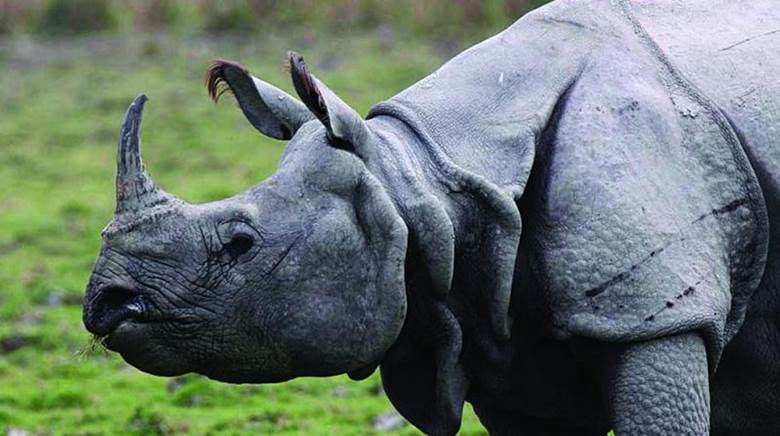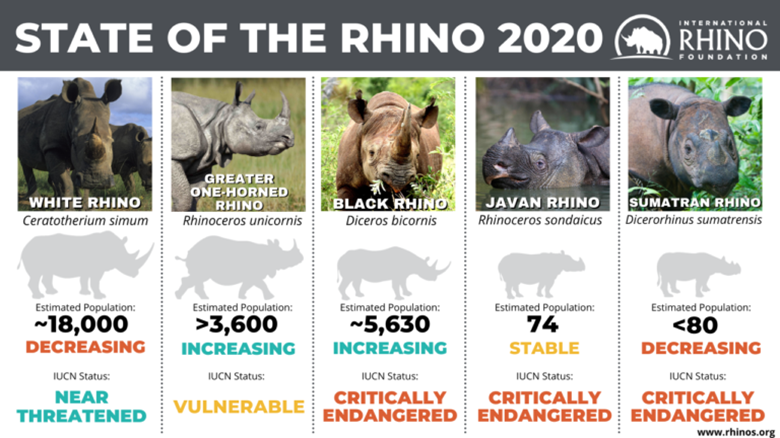RHINO

Copyright infringement not intended
Context: According to a study, published in the latest edition of People and Nature by the British Ecological Society, the horns of rhinoceroses may have become smaller over time from the impact of hunting.
Details:
- Rhinos have long been hunted for their horns. The five surviving rhino species are threatened by habitat loss and hunting.
- The study found that the rate of decline in horn length was highest in the critically endangered Sumatran rhino and lowest in the white rhino of Africa, the most commonly found species in the wild and in captivity.
- This observation follows patterns seen in other animals, such as tusk size in elephants and horn length in wild sheep, which have been driven down by directional selection due to trophy hunting.
- Five species:
- The Greater One-horned Rhinoceros: The greater one-horned rhino (or “Indian rhino”) is the largest of the
- White rhino:It is native to northern and southern Africa
- Black rhino:It is native to eastern and southern Africa
- Javan rhino:It is also known as Sunda rhino or lesser one-horned rhino
- Sumatran rhino:Critically Endangered species of rhino

Copyright infringement is not intended
Great Indian rhinoceros
- The Indian rhinoceros also called greater one-horned rhinoceros or great Indian rhinoceros is a rhinoceros species native to the Indian subcontinent.
- It is the only large mammal species in Asia to be down-listed from endangered to vulnerable in the International Union for Conservation of Nature,IUCN Red list in 2008.
- The extent and quality of the rhino's most important habitat are considered to be in decline due to hunting, agricultural development in tarai region and livestock encroachment.
- Indian rhinos once ranged throughout the entire stretch of the Indo-Gangetic Plain has reduced drastically to 11 sites in northern India and southern Nepal.
National Rhino Conservation Strategy for India:
- It called for active engagement between India and Nepal to conserve the greater one-horned rhinoceros.
- The single population of rhinos in Sukla-Phanta (Nepal), Valmiki tiger reserve (India)and Chitwan National Park (Nepal) and Dudhwa (India)is separated by the political boundary between the two countries.
- Instead of managing the two populations differ in the two countries, plan focus on the managing rhino population with the same protocol.
- The plan calls for expanding distribution range as occurrence of 90 per cent of the rhino in one protected area is a cause of concern.
- It also calls for strengthening protection, having dedicated research and monitoring and strict enforcement.
- The objectives include
- strengthening protection,
- expanding the distribution range,
- research and monitoring, and
- adequate and sustained funding.
https://epaper.thehindu.com/Home/ShareArticle?OrgId=GORAFEP60.1&imageview=0




1.png)
